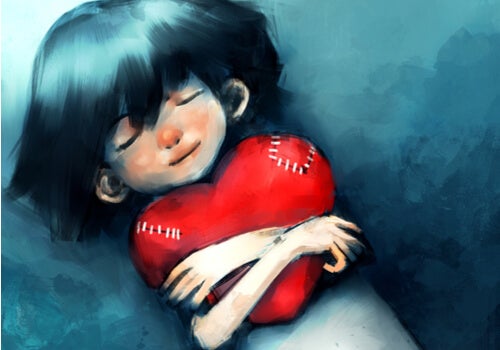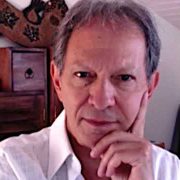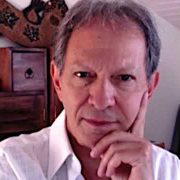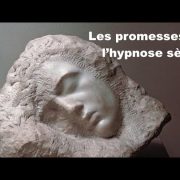Emotional wounds are traces of traumatic experiences from the past that creep in and condition the present. If you choose to process and heal these kinds of injuries, you go through a restorative process that allows you to live more fully. However, what’s this path like and where does it end?
In this article, we’ll show you four things that therapists might say to help their patient heal their emotional wounds. You might be able to identify with some of them.
Emotional wounds of childhood
Emotional wounds are vestiges of damage, generally produced during childhood. This stage is known as the ‘sensitive period of development’ because it’s a fundamental moment in the formation of personality. Therefore, the emotional traces produced in childhood, in part, determine the fullness of adult experiences.
We all have emotional wounds to some extent. We deal with them by creating new relationships. However, some can be so painful they tend to anchor us in our past pain.
As a rule, in these cases, symptoms such as anxiety and somatizations occur, among others. These usually prompt the sufferer to seek psychological help.
How do emotional wounds arise?
Emotional wounds generally arise due to traumatic experiences. For example, serious parental negligence or situations of violence. The sufferer themselves award it the classification of trauma. It’s an emotional wound formed when a person suffers an experience they perceive as negative, which has consequences in their adult life.
The main attachment figures must provide a child with various functions. For example, emotional guidance, rapid and adequate response to the child’s needs, or confidence in their qualities. This gives the child autonomy. Failing in any of these areas can generate some of the so-called emotional wounds of childhood.
Some of these injuries may be associated with the child’s attachment style. In other words, the child’s relationship with their parents. This relationship forms their interpretation of the world and of the relationships they build later. There are four kinds of emotional attachment wounds. These are the fear of abandonment, the fear of rejection, the wound of humiliation, and the fear of inefficiency.
Four things a therapist might say in the healing of emotional wounds
Healing these injuries is a complex process. However, some wounds heal in psychology consultations or via other restorative life experiences.
Here are four things a therapist might say to their patient to help heal the four main emotional wounds.
1. “Being alone won’t be as bad as you thought”.
This phrase is connected with the emotional wounds linked to the fear of abandonment. This emotional wound is usually made visible by the patient’s avoidance and fear of being left alone in any situation. In addition, these people often create dependent relationships and remain on constant alert due to the fear of being abandoned.
The person who suffers from this type of wound usually asks for help when their mechanisms for not remaining alone turn against them, thus distancing their loved ones. After a therapeutic evaluation of this emotional damage and the search for its roots in their childhood, the patient is often able to face their worst fears, This comes as a great surprise to them. Furthermore, over time, they even come to enjoy them.
2. “You deserve affection, understanding, and compassion”.
Emotional hurt related to the fear of rejection can stem from feelings of not being accepted by loved ones. In fact, these people tend to develop the idea that they’re not worthy of the affection or compassion of others.
People with this fear often have a painful self-image and feel extremely insecure. However, when their childhood wound begins to heal, they start to establish a foundation of self-love and the idea that they’re worthy of positive things and the affection of others.
3. “You can’t please everyone, nor should you really want to”.
There are certain emotional wounds that arise from experiences related to humiliation in childhood. This unacceptable burden for a child can turn into defense mechanisms, such as self-ridicule or the constant search for approval from others.
As these children grow up, this defense often becomes a problem in itself, making it difficult for them to connect with their own desires and concerns. However, when they manage to let go, they stop constantly satisfying others and begin to show attitudes related to their own self-care and autonomy.
4. “You can’t control everything. That’s life”
It’s common for these types of emotional wounds to appear in adults whose upbringing was excessively authoritarian or emotionally cold. These children live at the mercy of an excessive and constant demand with which they struggle desperately. However, as they become adults and separate from their parents, they’re likely to internalize this demand.
In fact, they become adults who anxiously try to take control of everything and who are rigid in their convictions. They generally ask for psychological help when they break down from not being able to control certain aspects of their life. Later in the therapeutic process, they’ll be able to appreciate that the unexpected isn’t always negative.

Healing emotional wounds means breaking the mold
Emotional wounds are injuries that usually occur in childhood, in line with the relationships established with attachment figures. As a matter of fact, we all have these types of wounds to a greater or lesser extent. However, some are extremely painful, hence people decide to seek psychological support.
The origin of emotional wounds is associated with traumatic experiences, which represent a deep imprint when the person reaches adulthood. In fact, the child who suffers from these negative experiences develops defenses that become a source of suffering in adulthood.
The healing of emotional wounds requires a therapeutic process, which may be more or less complex, and which involves a restorative experience. To begin the process, the person needs to recognize the emotional wound itself and its origin. In many cases, they end up understanding that, although their defense mechanisms saved them when they were children, today they’ve stopped working which causes them harm. In effect, they need to reinvent themselves.
The post Healing Emotional Wounds: Four Things a Therapist Might Say appeared first on Exploring your mind.



















Comments